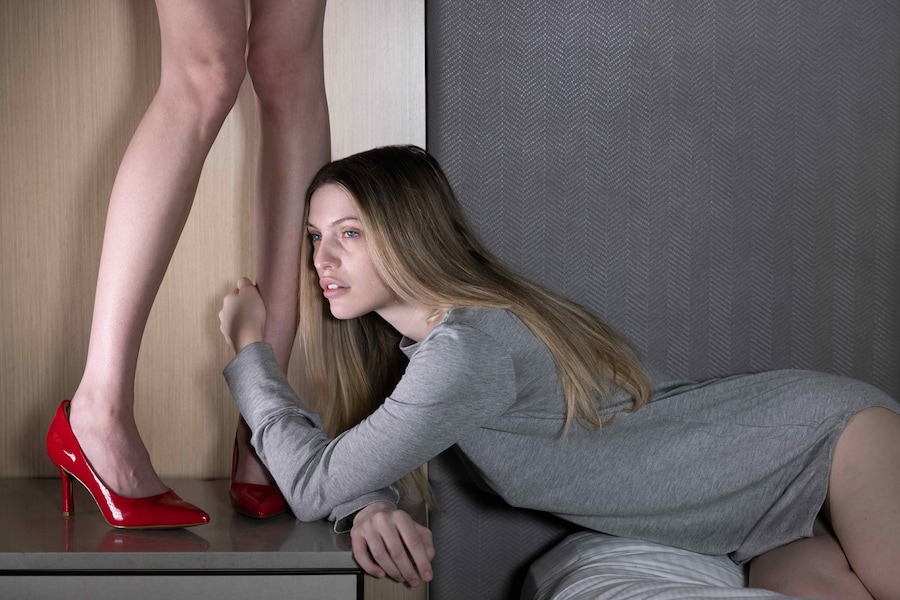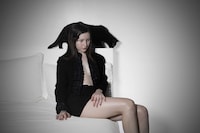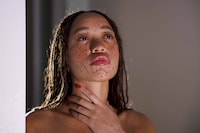The Los Angeles-based photographer’s new book features clinical, deadpan photographs that capture an austere clarity and human starkness
Emerging from the image-intensive world of Instagram, Los Angeles-based photographer Chessa Subbiondo built her practice in a landscape dominated by performance, emotional shorthand, and scenography engineered for algorithmic attention. While her early work developed within this visual language, her debut book Splint pivots entirely: shot primarily over a six-month period, the clinical, deadpan photographs are compelling in their austere clarity and human starkness.
Each image is deliberately stripped of narrative cues: figures – though cast from Subbiondo’s circle of recognisable friends like Lexee Smith, Devon Lee Carlson, and Salem Mitchell – are styled into a certain anonymity and placed in soulless “anywhere but everywhere” settings. “I think there’s a misconception because some people think that the through-line has something to do with women or girls,” she explains. “There are definitely references that I pulled from my life or my friends that are girls. But the book is for everyone.” In an era of relentless visual stimulation, where we’re so often coerced into instant feeling and reaction, Splint hands back our agency: meaning is neither assigned nor insisted upon.
Below, in her own words, Subbiondo explains how Splint, true to the title’s dual references, became both a brace that held her together and a project that embedded itself under her skin.
“There are images in the book from two years ago, but the bulk of it was made in a very intensive six-month period where I was shooting every single day. It really helped create a through-line in the images because they were taken in such close proximity. There was one point where we rented out a house, for me and two of my friends who were helping, to stay in. It felt like I was really living in the world of the book.
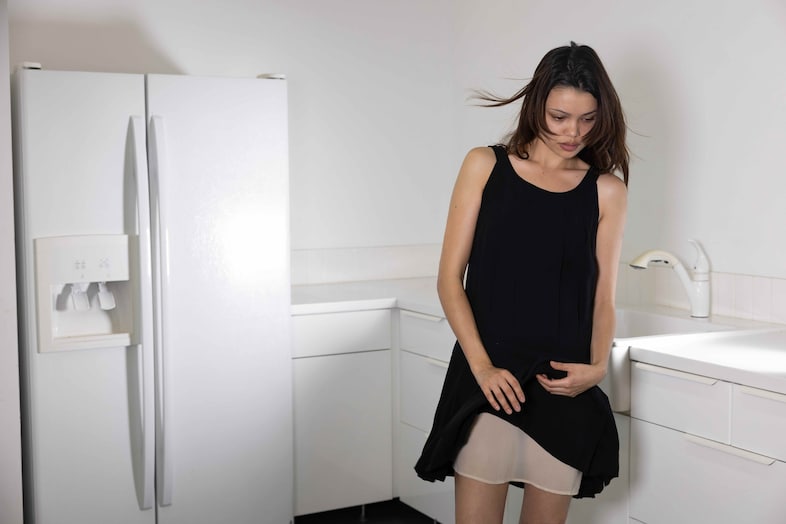
“The general through-line of the book is reliant on location as well as the colour and styling choices that we made. I don’t know if there’s one word that would describe it … timeless, clean were the things that I really wanted to focus on. Having everything feel stood still in time versus it being reminiscent of anything – or very of the moment. It’s the first time that I wanted to make images that don’t just scream at you – they are very easily interpreted or moldable.
“When it came to casting, there were people that I absolutely wanted in the book so I would base scenes around them. I keep a list of random ideas in my Notes app – if a stranger read it, it wouldn’t make sense – but I’ll be walking and see something that’s a pose or an emotion or whatever I want to convey and then I’ll add it to the list. So, when we were doing this, I was going through that list and thinking who do I know or who have I seen on Instagram that I feel would be really good for this scene.
“For the styling, I worked with my good friend Skylar [Pedroza]. We would stay up for hours having conversations about clothing choices that felt so mundane, but she understood that there was no pressure to make anything a certain way. It was more about placing these characters in a world and thinking, realistically, ‘What could they be wearing in this moment?’ But also making sure it wasn’t something that took away from the emotions or placed too much focus on the outfit.
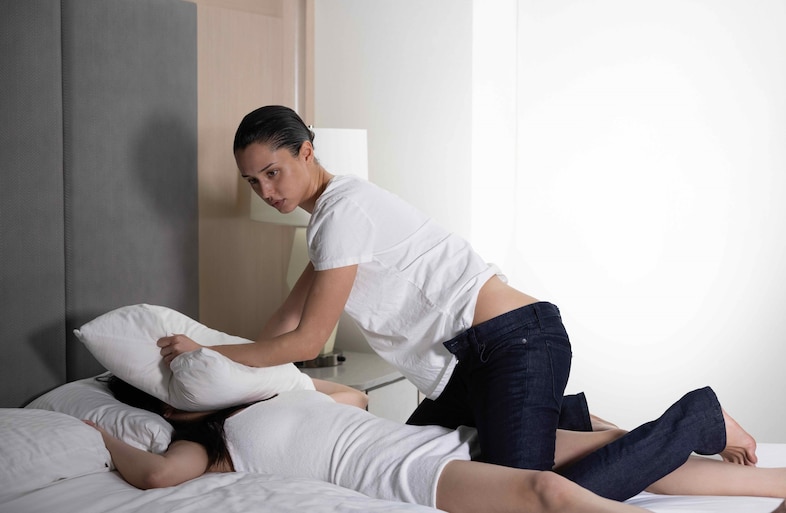
“The title Splint is interesting because, honestly, I just really liked the word and the way it looked. But also, it’s like a splint – as in, a brace. This is what the book felt like for me: it was really holding me together this past year and giving me purpose, something to believe in and put all my energy into. But at the same time, it’s also like a splinter, something deep under your skin, nagging at you to pull it out. And this was definitely something that I kept coming back to and picking at.
“It’s going to be a really beautiful experience flipping through this book in a year, or two years, from now. There are definitely images in there from two years ago that I look at and can remember exactly what was going on in my life, and it feels so weirdly different from now. That’s something so beautiful to see. There are so many little weird things I can remember, like what I ate for breakfast on that day. When I flip through it in a couple of years, it’s all going to come flooding back to me and feel like this really intense thing, which I’m so excited to experience. I have the first copy that I kept for myself in my room, and I wrote a little note to myself on the first page. I want to go back and read it in a year or so, because it’ll probably mean something so different than it does now.”
Splint by Chessa Subbiondo is published by Super Labo in a limited edition of 1,000 copies, and is out now.
